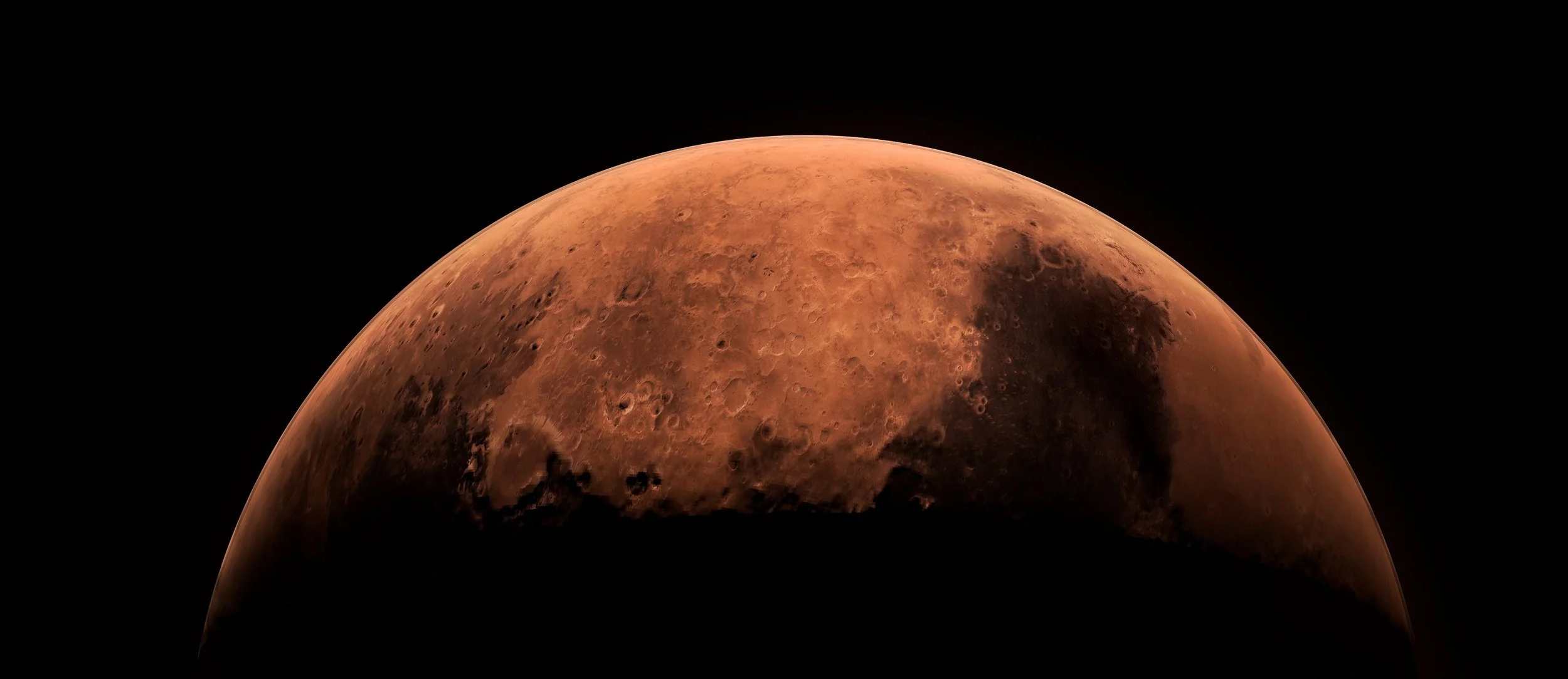NASA's InSight spacecraft has given us a peek into Mars like never before! Before it wrapped up its mission last December, it sent back some fascinating data, now published in the peer-reviewed scientific journal Nature.
Here's what scientists have found out.
Image Credit: joshimerbin via Shutterstock / HDR tune by Universal-Sci
Shortening Martian Days
Mars, our neighbouring red planet, doesn't just spin – it wobbles a little as it turns, kind of like a top that's about to stop spinning. This wobbling is due to the liquid metal core inside the planet sloshing around. Think f it like the water moving in a half-filled water bottle when you shake it.
But that's not all. It turns out that Mars' spin is accelerating! That means that a Martian day (basically the time it takes for it to complete one rotation) is getting slightly shorter!
Though it's only a fraction of a second shorter each year, scientists are dumbfounded. Some believe this change might be because of ice building up at its poles or land rising after being under ice. Imagine an ice skater spinning; when they pull their arms in, they spin faster. Something similar might be happening with Mars!
Unlike Mars, Earth's rotation is getting slower. As a result, days were shorter in the past. Modern atomic clocks indicate that today's day is approximately 1.7 milliseconds longer than it was a century ago, leading to more frequent adjustments of UTC with leap seconds.
Back when dinosaurs last roamed the earth (about 65 million years ago), days were a half-hour shorter! This is because the moon 'pulls' at our oceans, shifting the mass of our planet. In contrast, Mars has no oceans that can "slow down" the planet.
So, How Did Scientists Find All This Out?
Enter RISE, a high-tech gadget on the InSight spacecraft. It works a bit like radar, sending signals to Mars and catching them when they bounce back. By analyzing these signals, scientists can figure out how fast Mars rotates.
RISE's principal investigator, Sebastien Le Maistre, who's been closely studying the data, explained that looking for these tiny changes in Mars' movement is like finding a needle in a haystack.
"It's a historic experiment," said Le Maistre. "We have spent a lot of time and energy preparing for the experiment and anticipating these discoveries. But despite this, we were still surprised along the way – and it's not over, since RISE still has a lot to reveal about Mars."
This artist's illustration depicts NASA's InSight lander on the Martian surface, highlighting the antennas positioned on the spacecraft's deck. Together with the lander's radio transponder, these antennas form an instrument known as the Rotation and Interior Structure Experiment, commonly referred to as RISE. (Image Credit: NASA/JPL-Caltech)
Mars' heart, another mystery
The same tech, RISE, has given hints about Mars' heart, its core. It seems the core is pretty large, roughly half the size of the whole planet! Plus, it's not a perfect ball; it has an odd shape that scientists are trying to understand better.
As per usual with these types of discoveries, the curtain rises on more Martian secrets waiting to be discovered. We will keep you posted!
Sources and further reading:
Too busy to follow science news during the week? - Consider subscribing to our (free) newsletter - (Universal-Sci Weekly) - and get the 5 most interesting science articles of the week in your inbox
FEATURED ARTICLES:









